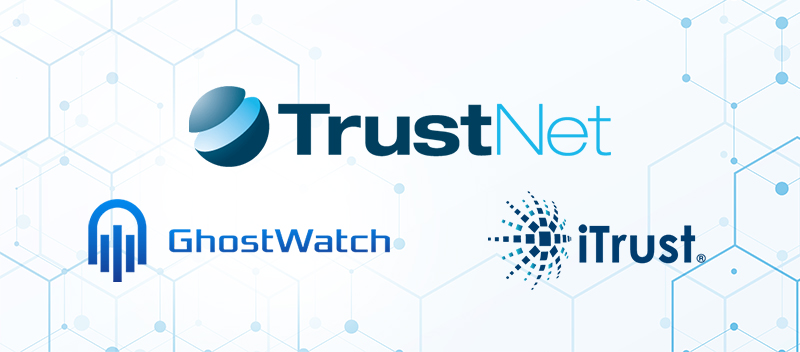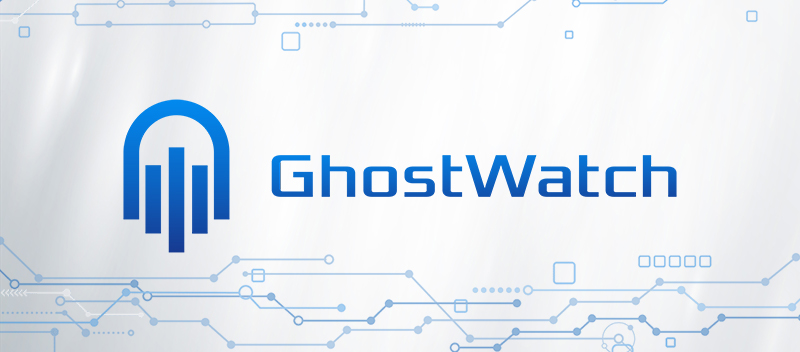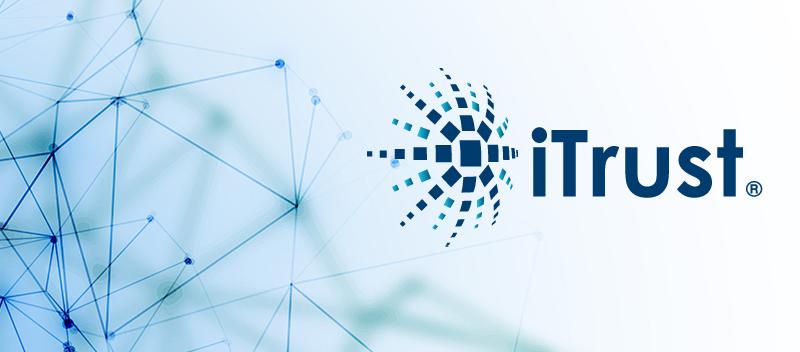Blog Peering into the Future: TrustNet’s Vision for Cybersecurity in 2024
Peering into the Future: TrustNet’s Vision for Cybersecurity in 2024

TrustNet, a leading global provider of cybersecur services span managed security, consultingity and compliance services since 2003. Our, and compliance, making us a strategic partner for medium to large businesses. At TrustNet, our mission is to help them build trusted relationships with their customers, partners, and employees.
In today’s digital age, staying one step ahead of cyber threats is not just an option; it’s a necessity. The implications of a cyber breach can be catastrophic, ranging from financial losses to reputational damage. With cybercriminals becoming more sophisticated, the need for robust cybersecurity measures has never been more critical.
This is where TrustNet’s cutting-edge solutions ensure that these businesses are well-equipped to face tomorrow’s cyber challenges. Keep reading as we look into TrustNet’s vision for cybersecurity in 2024, detailing future trends, challenges, and strategies to safeguard digital assets in an ever-evolving cyber landscape.
Emerging Technologies
The future of cybersecurity is intertwined with several emerging technologies:
Artificial Intelligence (AI) and Machine Learning (ML): AI and ML are increasingly used to predict and prevent cyber threats. They provide the ability to analyze large volumes of data to identify patterns and detect anomalies, significantly outpacing human capabilities in these areas. This can help organizations to identify potential threats before they become serious issues.
Quantum Computing: Quantum computing has the potential to revolutionize encryption methods, creating systems that are almost impossible to break. This could provide a level of security that far surpasses anything currently available, making it much harder for cybercriminals to gain unauthorized access to systems.
Blockchain Technology: Best known for powering cryptocurrencies like Bitcoin, blockchain technology has much to offer in cybersecurity. Its decentralized nature makes it difficult for cybercriminals to launch successful attacks, and its use of cryptographic techniques provides high transparency and integrity. It can secure transactions, verify identities, and ensure data integrity.
Other emerging technologies include:
- Behavioral Analytics: This technology involves analyzing data patterns to identify suspicious behavior. It can detect insider threats, fraud, and advanced persistent threats.
- Cloud Encryption: As more and more data is stored in the cloud, encryption of this data is becoming increasingly important. Cloud encryption allows for the secure transmission and storage of data.
- Context-Aware Security: This involves considering the context of user actions to make real-time security decisions. It can provide a more nuanced approach to security, reducing false positives and improving threat detection.
As we move towards 2024, these emerging technologies are expected to reshape cybersecurity. AI and ML, for example, are set to become even more sophisticated, potentially automating many aspects of threat detection and response. Quantum computing could start to make ‘unhackable’ encryption a reality, while blockchain could secure everything from financial transactions to supply chains.
Meanwhile, the rise of internet-connected devices (IoT) and increasing reliance on cloud storage will likely drive demand for advanced security solutions like behavioral analytics, cloud encryption, and context-aware security. These technologies will help protect businesses against threats and help them build trust with customers, partners, and employees.
For more on our cybersecurity and compliance services, Click Here
Growing Threats
Cybersecurity threats are ever-evolving, and 2023 has seen a wide variety of such threats. Here are some of the notable ones:
Social Engineering: This technique involves manipulating individuals into revealing confidential information or conducting actions compromising security. It often relies on tricking people into breaking standard security procedures.
Third-Party Exposure: Many businesses face threats due to the weak security postures of their third-party partners. Cybercriminals can exploit these vulnerabilities to gain unauthorized access to data.
Configuration Mistakes: Incorrectly configured systems can leave vulnerabilities that hackers can exploit. This includes misconfigurations in cloud services, open-source databases, and application development frameworks.
Poor Cyber Hygiene: Inadequate security practices, such as weak passwords and a lack of regular updates, can make systems easy targets for cybercriminals.
Cloud Vulnerabilities: As more data is stored in the cloud, it becomes an attractive target for cybercriminals. Cloud vulnerabilities can arise from poor access management, insecure interfaces and APIs, and inadequate data encryption.
Malware and Ransomware: These continue to be significant threats. Cybercriminals are constantly developing new variants of malware and ransomware to evade detection and cripple systems for financial gain.
Phishing: Phishing remains one of the most common cybersecurity threats. It often involves sending fraudulent emails that appear to come from reputable sources to steal sensitive data like credit card numbers and login credentials.
Data Breaches: Data breaches occur when cybercriminals gain unauthorized access to data. Such incidents can lead to massive financial losses and damage to reputation.
Risk from Hybrid or Remote Work: The shift to remote and hybrid work models has expanded the attack surface for cybercriminals, making networks more vulnerable.
Mobile Attacks: With the increased use of mobile devices for work, attacks targeting these devices, including mobile malware and Wi-Fi interference, have also risen.
Looking ahead to 2024, several emerging threats pose significant challenges:
- Supply Chain Compromise: As businesses become increasingly interconnected, there’s a growing risk that cybercriminals could target one organization as a way to access another.
- Advanced Disinformation Campaigns: The spread of false information can cause significant harm and is expected to become an increasing threat.
- Rise of Digital Surveillance: As technology continues to evolve, so too do the methods used by cybercriminals. There’s a growing concern that they could increasingly turn to digital surveillance to gather information.
- Unpatched Operating Systems: Cybercriminals are expected to continue exploiting known vulnerabilities in unpatched operating systems.
- Data Theft and Ransom Attacks: These are likely to become even more sophisticated, with cybercriminals using new tactics to steal data and demand ransom.
TrustNet’s Strategies for the Future
At TrustNet, we take pride in our comprehensive approach that combines cutting-edge technology, deep industry expertise, and proactive strategies. Our dedication to providing top-notch cybersecurity solutions has earned us the trust of many businesses worldwide.
A crucial part of our cybersecurity strategy involves leveraging innovative services such as GhostWatch and iTrust. Here’s a closer look:
GhostWatch: GhostWatch helps clients build trust and confidence. As a leading provider of managed compliance and security services, GhostWatch is backed by industry-leading technology, and our highly skilled team of experts delivers world-class service 24/7. We firmly believe that trust is the foundation of all business relationships.

With GhostWatch, we offer:
- Affordable Security: We make security and compliance accessible to businesses of all sizes.
- Reliability: Our professional services are dependable, ensuring consistent protection.
- Transparency: We provide transparent pricing with flexible terms.
- Effectiveness: Our technologies and services are always a step ahead, offering robust protection.
- Rapid Deployment: We ensure swift and seamless deployment of our services.
- Straightforward Onboarding: We make it easy for businesses to get started with our services.
For more information, Click Here
iTrust: iTrust takes the trust and security of blockchain technologies and beyond to a new level. It addresses the high risks associated with publicly facing Bitcoin (BTC) nodes, the low maturity of the assurance process, and the lack of node security integration with enterprise architecture. iTrust also tackles the need for more cooperation within organizations in blockchain security and difficulties in meeting compliance requirements.

With iTrust, we offer:
- Blockchain Nodes Risk Management: We provide security evaluation and monitoring for the blockchain BTC environment.
- Node Penetration Testing: We conduct thorough penetration testing to identify and address potential vulnerabilities.
- Web3 Compliance Management: We help businesses meet compliance requirements in the Web3 era.
For more information, Click Here
At TrustNet, we are committed to being the reliable partner you need in cybersecurity and compliance. We will continue to provide robust, cutting-edge solutions that align with your unique business needs and goals in 2024 and beyond.
Stay one step ahead of cyber threats with TrustNet. Talk to an expert today.




